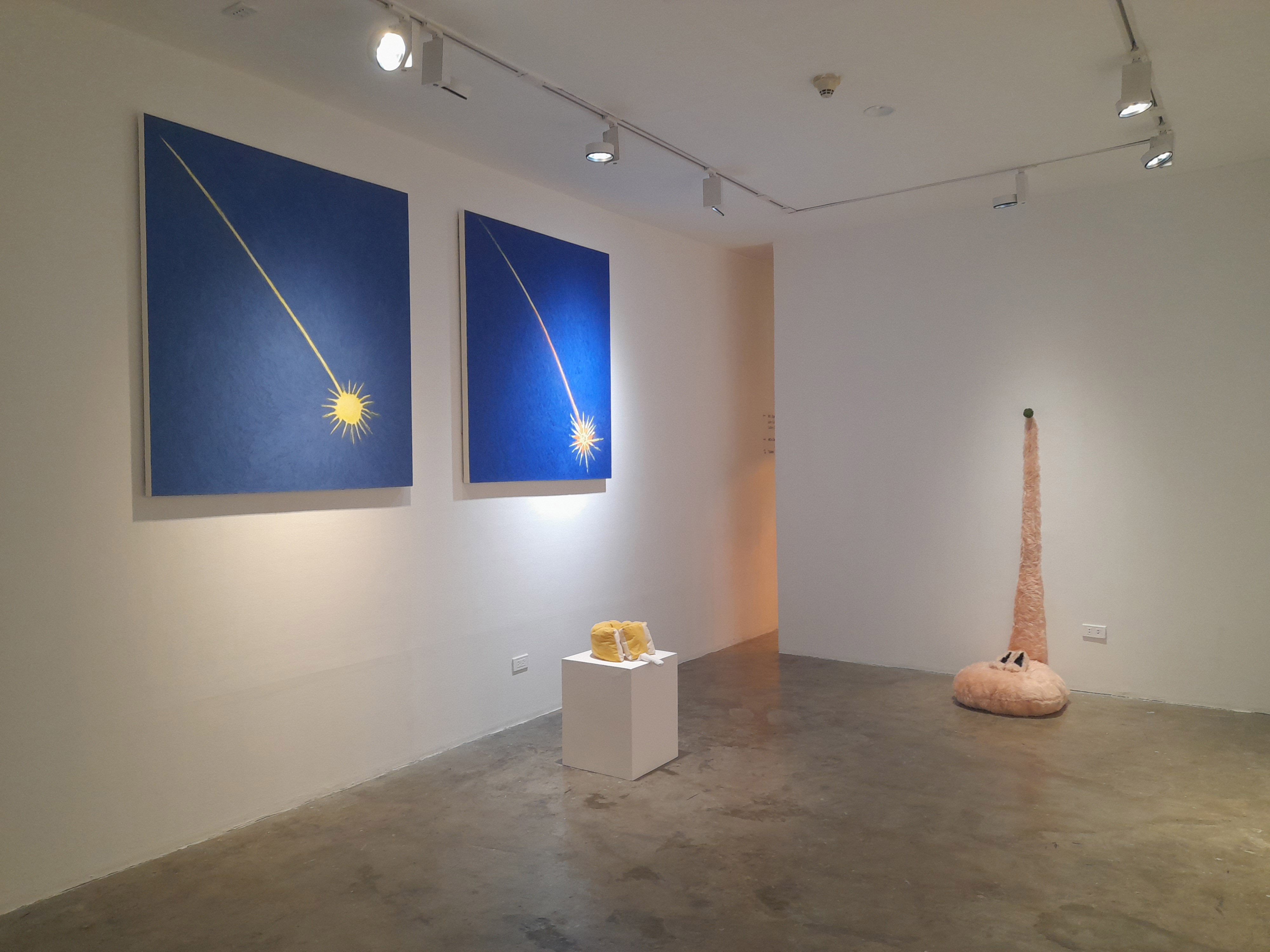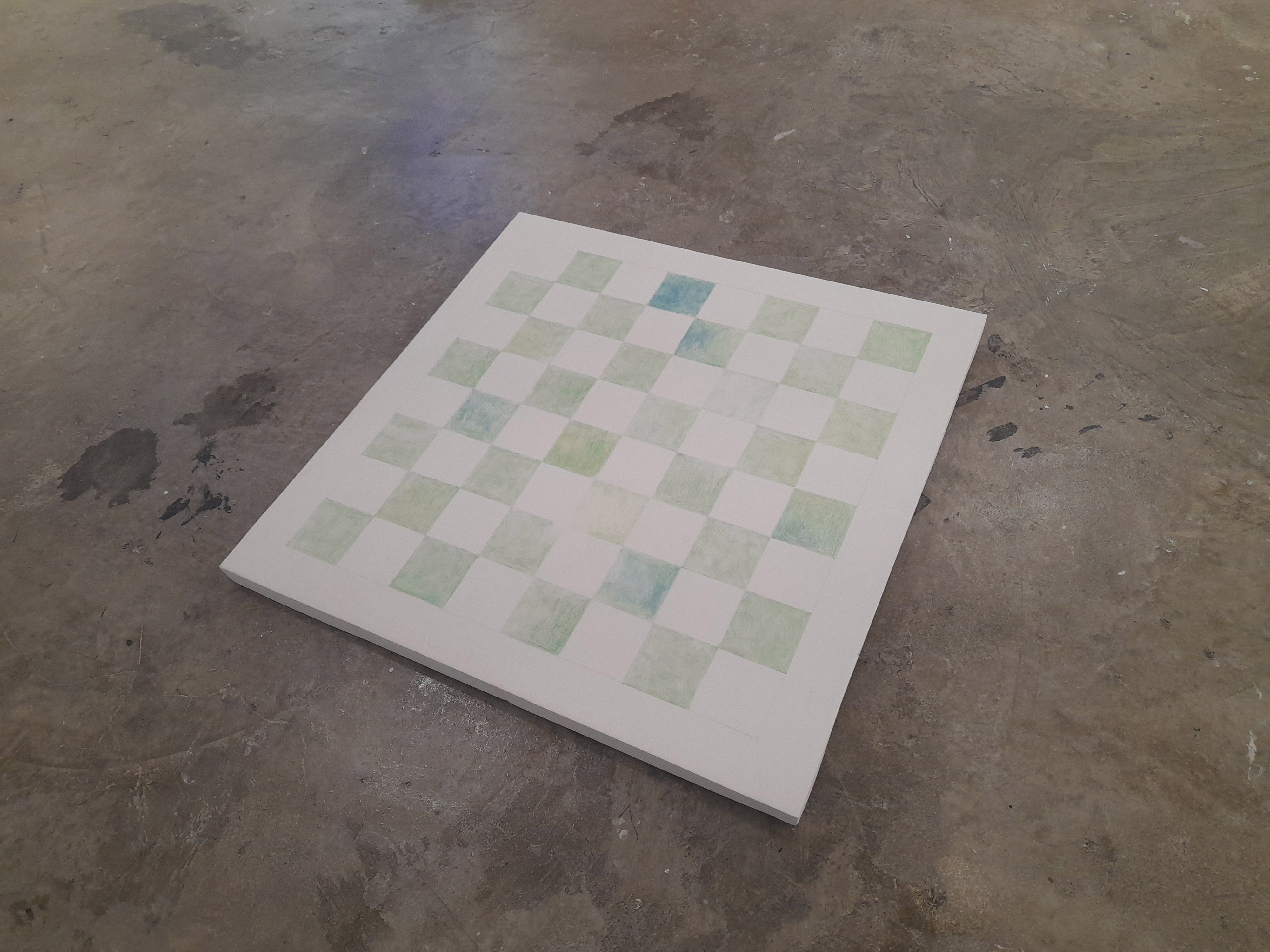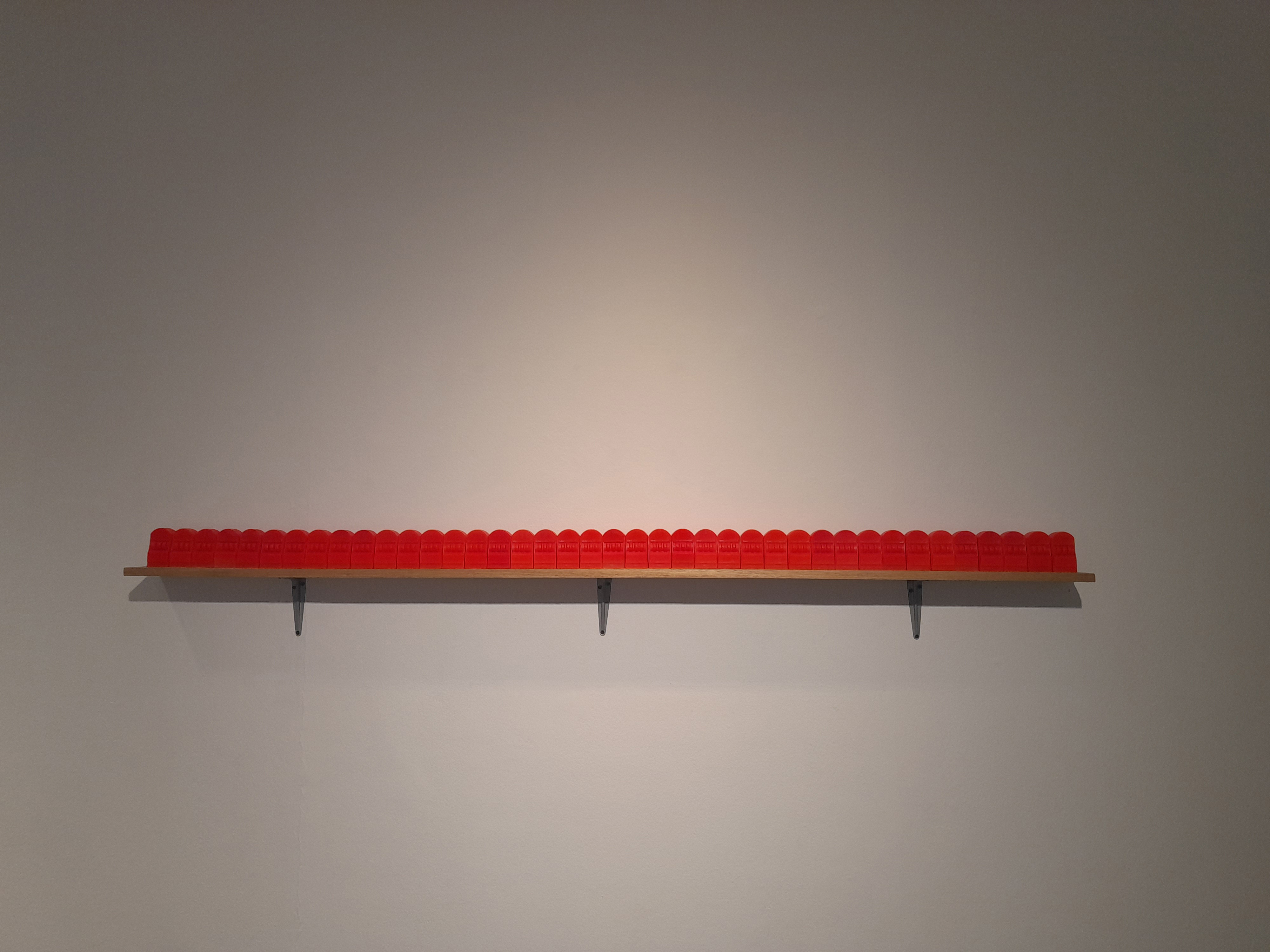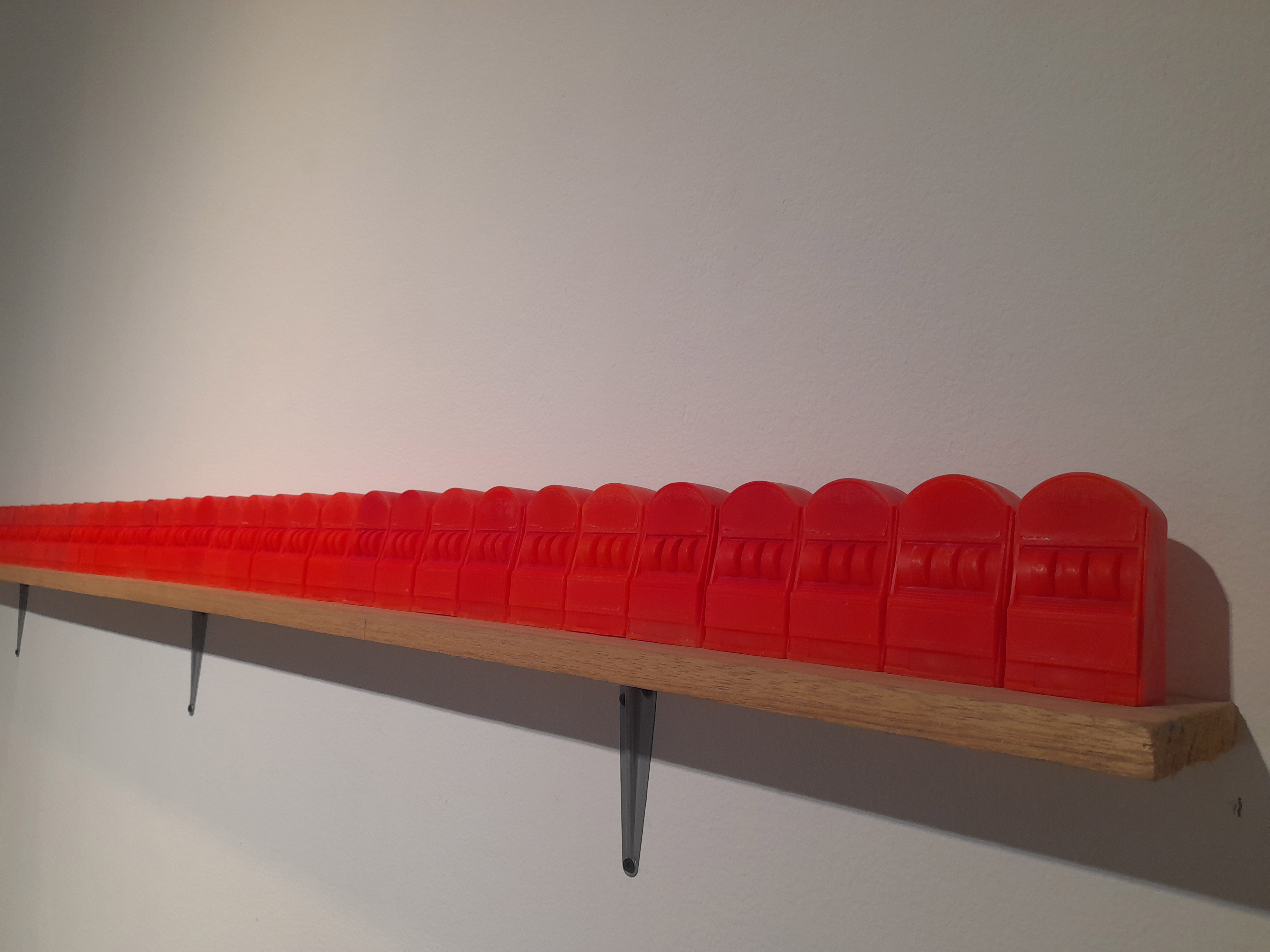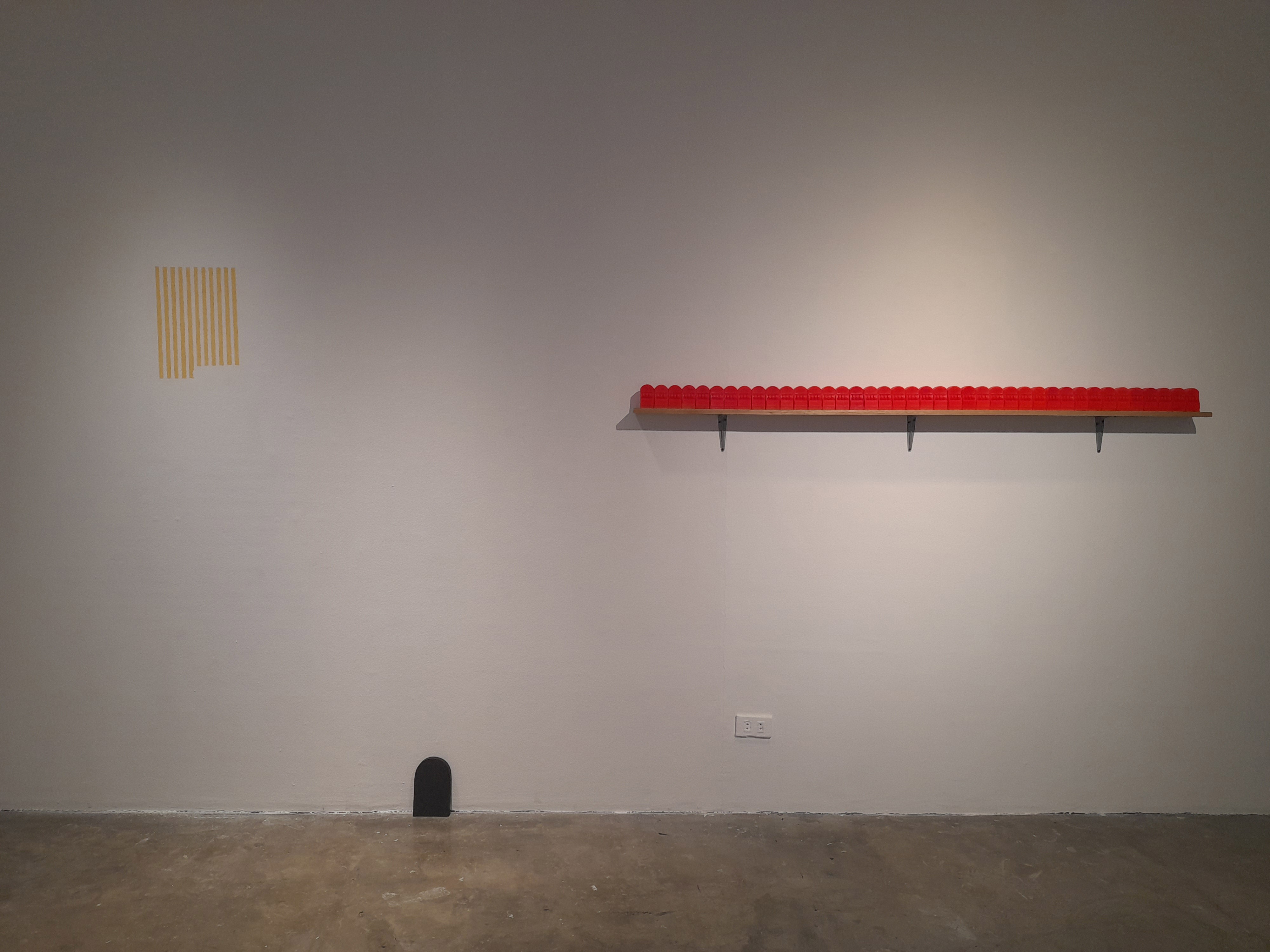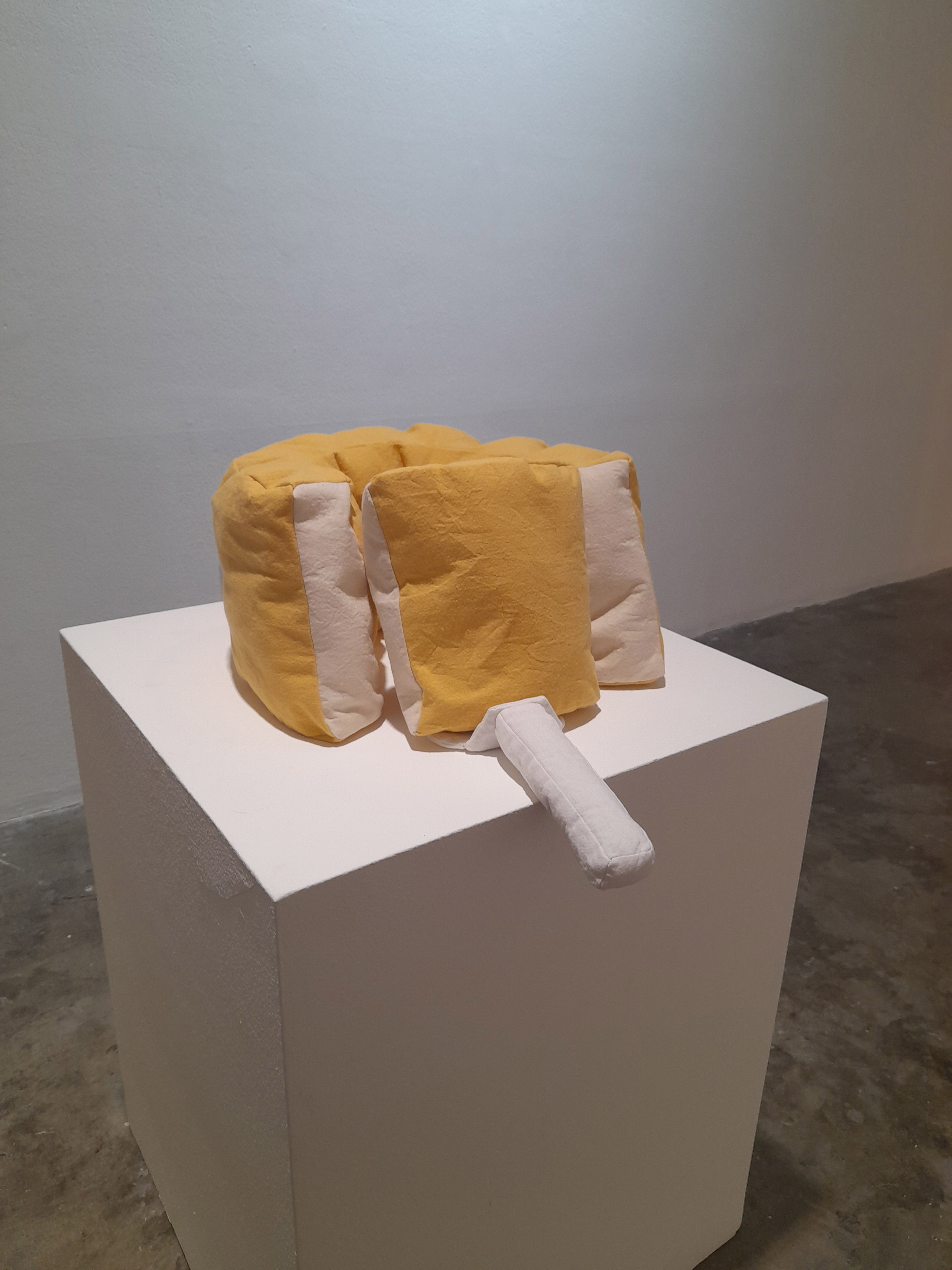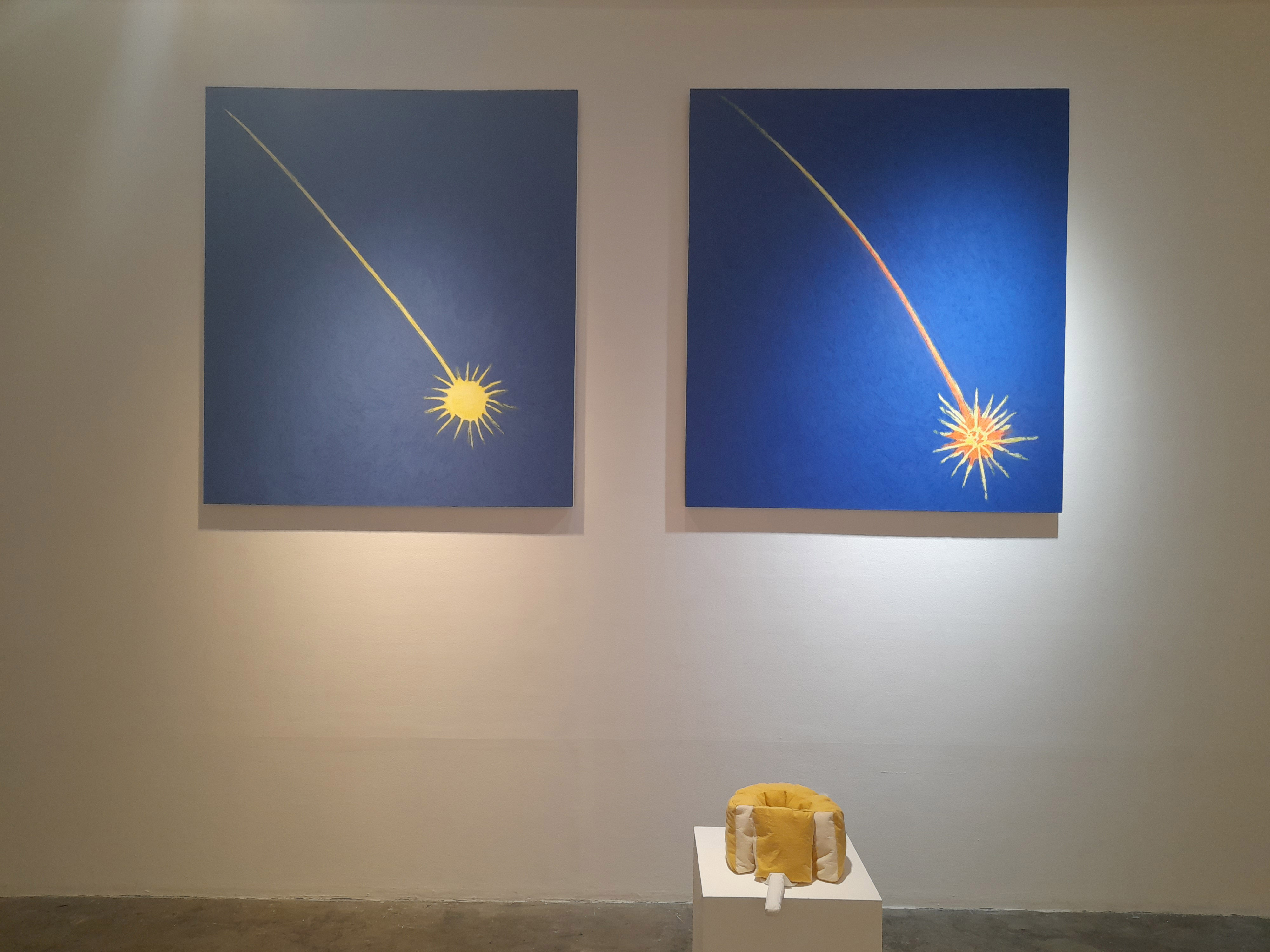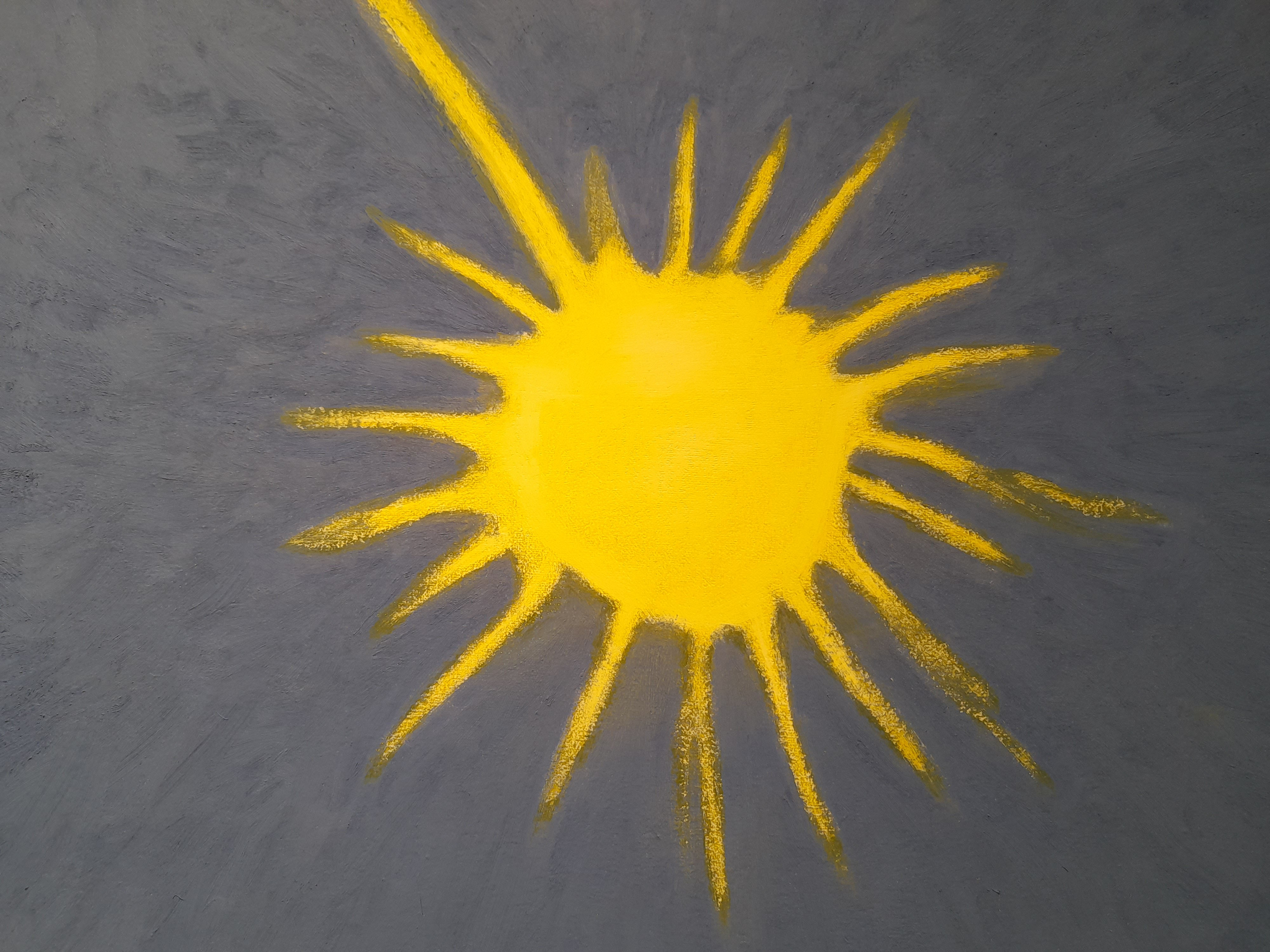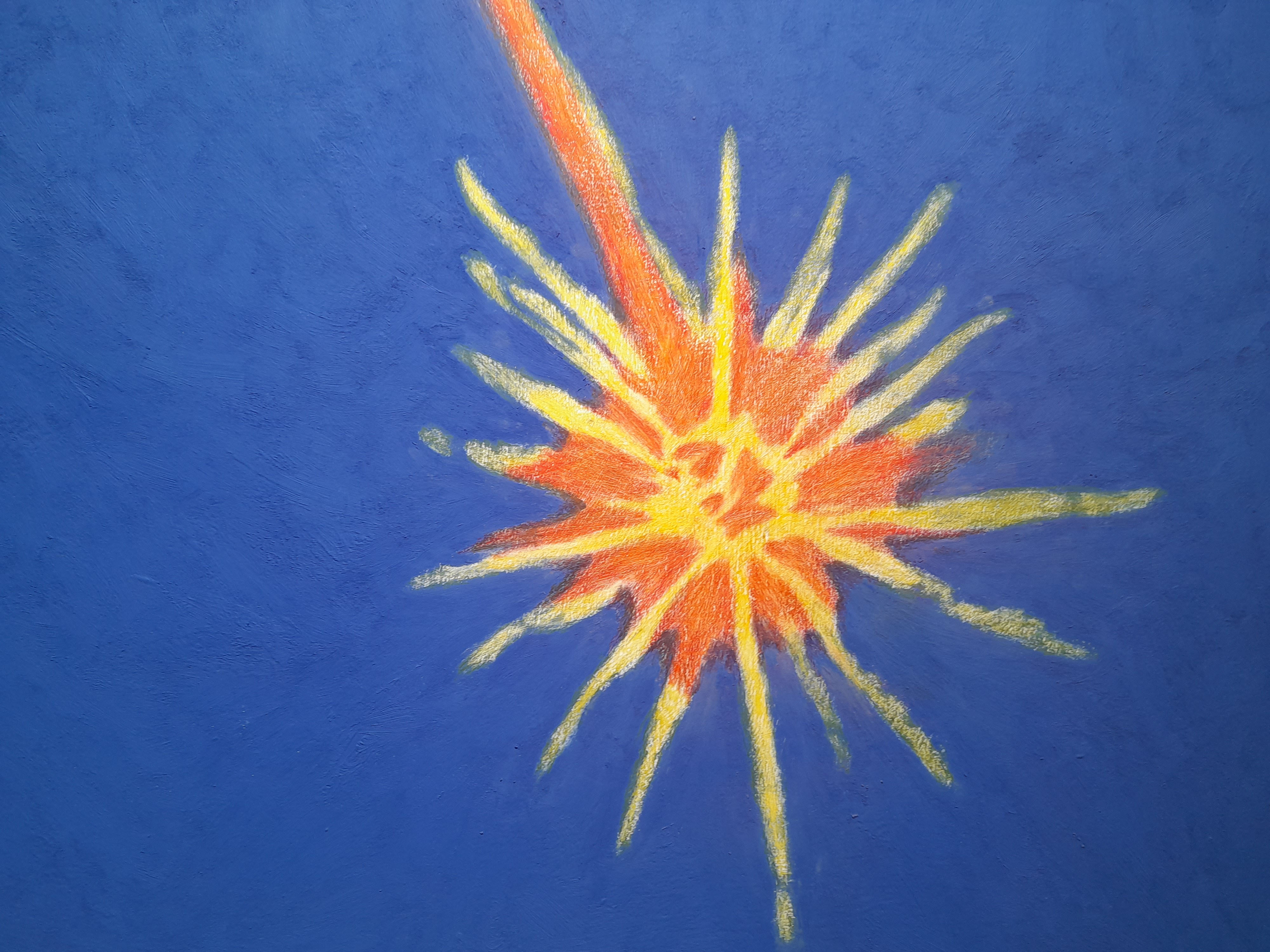Viewing Pushkin Roberts Anthology by Gale Encarnacion at MO_Space did indeed feel like browsing through the pages of an anthology book. Each work felt like its own pocket universe and in relation to the whole show, like different threads of a multicolored web. Encarnacion titles each work after a selected short story or poem, from the likes of F. Scott Fitzgerald to Arthur C. Clarke. How the works relate to their respective text is left to the viewer to surmise. Looking through the works and their titles, I found myself pondering on both the limits and potential of intertextuality in art. Without having read the texts in question, I pondered how that would impact my viewing experience of each work. Would the readings be lost without context, or would they open up the work to even more possibilities for interpretation?
Now he was claiming to have launched on the world a discovery beside which the invention of gunpowder, of the printing-press, and of steam locomotion were inconsiderable trifles.
On the floor near the entrance to the space lay a white square panel with a painted green grid reminiscent of a checkerboard. It might have been enticing one to a game or using such a game as a conceptual framework of sorts. The work’s title: Bernice Bobs Her Hair. It references the short story by F. Scott Fitzgerald published in 1920 about Bernice, a Native American girl navigating the complexities of being a young woman in the flapper era of the 20s. The panel reminded me of the visual simplicity of many barbershop logos. Reading the story formed a connection between a game and a haircut: a milieu where womanhood and social status are a strategic game that can be lost with a single bob cut.
'Dip in the Pool', 2022. Pigmented wax. Variable size.
Similarly suggesting a kind of game was the line of red wax figurines that resembled slot machines. Placed so closely together, from afar, they looked like gravestones. With a title like Dip in the Pool, there were palpable allusions to gambling, from the slot machine forms, to the eponymous winning “pool,” to the sinister undertones dressed in red. The text in question only serves to emphasize these implications and paint them in a more macabre light. In Dip in the Pool by Roald Dahl, eager gambler Mr. Botibol tries to get the best of a guessing game involving the ship he and the other passengers sail on.
I found myself looking at each work in its entirety before checking their titles, as each literary reference entailed a reframing — a reframing not to acknowledge any right or wrong readings, but of opening up one’s perspective to multiple interpretations, possibly vastly different from one’s initial outlook. I saw the small black gravestone propped against a corner as a symbol of grief and the loss of something innocent. Now, there’s a tinge of dark humor with the title Tobermory, about a cat who unwillingly becomes quite remarkable. The same way some artworks stir up recollections of movies, TV shows, music, or other media in general, the element of intertextuality causes one to appreciate a breadth of stories that can exist far outside of the scope of one’s experience.
At the time of its publication, José Garcia Villa’s The Coconut Poem scandalized readers for its explicit sexual imagery. With intertextuality comes historical context, as today the poem would hardly cause such an uproar. It is interesting to note the way such reception impacts the perception of one with fresh eyes. I found the poem to be sensual and tender upon first reading — hardly controversial. Similarly, Encarnacion’s rendition is one I processed with a layered understanding. Visually, it was inscrutable: obscure in form yet innocently soft like a pillow. Yet the connotations of sexuality reframe the notable protuberance at front. Suddenly I find myself revisiting the question of controversy: Why would something seemingly innocent stir up such scandal, whether directly or by association?
My favorite piece of the show and favorite text was The Nine Billion Names of God, with the short story written by Arthur C. Clarke. A large diptych depicts two near mirror images of each other: a star shooting across the sky. They seemed to be illustrating a phase of creation, with one star rendered more fully than the other. Only after reading the story does destruction come to mind. Encarnacion in tandem with Clarke evokes such grand themes through simple means – a twofold visual by the artist and an impactful ending by the author.
It’s these endings, these titles, these punctuations that make viewing art tied to text such a densely fascinating experience. Prevailing trends in pop culture media today veer towards an overflowing of information with prequels, spinoff stories, post-written authorial explanations that more often than not plug in the gaps of rich universes where once their potential was endless. One might wonder if the same tendencies seep into the visual arts where the need to grasp an explanation behind an artwork or otherwise abandon it altogether is all too tempting. Through this show, Encarnacion treads a fine line between introducing viewers to the interconnected narratives of each work while encouraging them to walk such untraveled roads themselves.
Detail shot. 'The Nine Billion Names of God', 2022. Oil and colored pencil on canvas. 54” x 48” each (diptych).
The human race will have finished what it was created to do, and there won’t be any point in carrying on. Indeed, the very idea is something like blasphemy.
Flipping through the pages of an anthology, one recalls snippets of worlds writers have introduced them to. Similarly, revisiting this exhibition, I recall snapshots of interwoven narratives shaped by peculiar and intriguing visuals – the sensuality of coconuts, the strategic game of haircuts, and the morose mortality of an exceedingly intelligent cat. Such stories may or may not be your cup of tea, but the intent of the artist is clear: read and explore.
Pushkin Roberts Anthology by Gale Encarnacion runs from December 10, 2022, to January 8, 2023, at MO_Space Gallery in Taguig City.
Mara Fabella is an artist, writer, and occasional fitness junkie. Tap the button below if you'd like to buy her a coffee.
Images courtesy of the writer.

